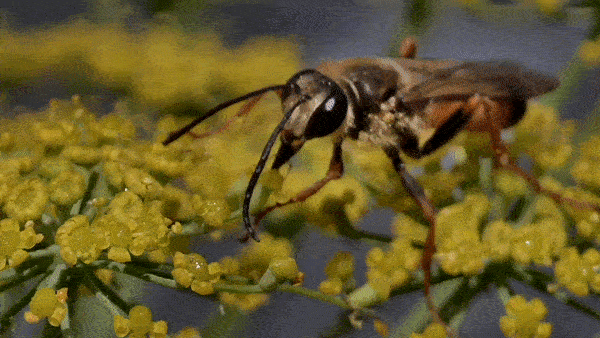Everyone has their favorites and they will stick to their choices till death. Take the case of the person who will stand on the left side of an escalator during peak hours or someone who has the habit of looking at the menu right when their time comes to order in a busy line at Chipotle or even people who have the audacity to order fruits on their pizzas. Similarly, insects have favorites when it comes to choosing the places they will visit to get their nectar fix or places they lay their eggs. Hence you will see a wide variety of flowers to cater to the wide spectrum of clients.
As an example, a common butterfly that one sees in California is the Cabbage White, which came over without a valid visa and never went back. Their young ones prefer to snack on plants from the cabbage family, think your mustard, kale, cauliflower, cabbage(duh)... Alarm bells rang when hipsters started seeing their kale leaves being devoured by these caterpillars instead of making its way to their salad bowls.
One way to identify it is by its plain white color with 2 dots that is supposed to mimic an unfinished emoticon. Males have one spot on each wing, females have deux (that's two in French just so you know, I had to boast how I know more than 1 language even though it's just a couple of words).
Below is one resting on Perennial Pepperweed flowers, wondering if this location has a good school district for its kids to grow up.
When these wasps have decided they have sufficient financial stability and want to raise a family, they will start making a nest by carrying lumps of mud in their mandibles one at a time.
This is how a nest looks in its finished state.
This venom is just potent enough to paralyze the spider, so it can't move but it can still watch the world around it. At this point it is similar to someone in a Walmart on a mobility scooter but then the batteries suddenly give out. Then, the wasps will transport the paralyzed spider to the mud nest. Once it feels the numbers of paralyzed spiders will suffice the appetite of its babies, it will deposit the egg and seal the chamber. It will make separate chambers for each of its babies with their own food provisions, so siblings don't fight with each other. I know one question that is swirling in your mind, why doesn't it kill the spider instead. You see, if it kills the spider then it will decompose and judging by the size of those chambers it is hard to fit a refrigerator in it, hence paralyzing the spider will keep it fresh for the larvae to consume. Yum! Yum!









No comments:
Post a Comment
Did you learn something new in this post? Let us know in the comments below